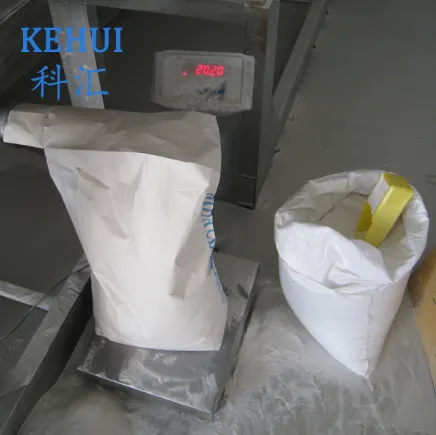白雲母, It is an important rock forming mineral belonging to the mica group. Its unique physical and chemical properties and wide range of applications make it play an indispensable role in both nature and industrial fields. This article will provide a brief introduction to the composition, structure, physical properties, genesis, and applications of Muscovite Mica.

The chemical formula of Muscovite Mica is KAl2 (AlSi3O10) (OH) 2, which belongs to aluminosilicate minerals
The structure of mica moscovite is characterized by a typical layered structure, consisting of tetrahedral and octahedral sheets. These layers are connected by potassium ions to form a crystal structure with cleavage planes. This special structure gives Muscovite Mica extremely significant cleavage properties, making it easy to peel off into thin sheets with good elasticity and insulation.
Muscovite Mica has outstanding physical properties
Firstly, it has a perfect cleavage plane that can be peeled off into extremely thin flakes along the substrate direction. Secondly, mica muscovite mineral has high transparency and can appear colorless or light colored, sometimes appearing pale yellow, light brown, and other colors due to the presence of trace elements. In addition, Muscovite Mica has good chemical stability, is not easily corroded by acid and alkali, and is resistant to high temperatures and not easy to burn. It has excellent insulation properties and is an important electrical insulation material.
The formation of Muscovite Mica is relatively complex
It can be mainly divided into the following types: firstly, magmatism, which forms the mica var muscovite type in the crystallization process of acidic magmatic rocks. Next is metamorphism. During regional metamorphism, rocks rich in aluminum, silicon, and potassium, such as mudstone and shale, undergo metamorphism to form schist and gneiss, which often contain a large amount of Muscovite Mica. Another type is hydrothermal activity, in which minerals in the hydrothermal solution precipitate and crystallize, which can also form Muscovite Mica.
The application of Muscovite Mica is extremely extensive
Due to its excellent insulation properties, it is widely used in the electronics industry as a capacitor, resistor, electrical insulation material, etc. Its transparency makes it suitable for manufacturing optical instruments, such as cover slips for microscopes. Define muscovite mica sheets can also be used as substitutes for window glass, especially for early fireplace windows. In addition, Muscovite Mica powder is widely used in industrial fields such as paint, plastics, rubber, etc., which can improve the strength, toughness, and corrosion resistance of products. In the cosmetics industry, Muscovite Mica powder is often used as a filler and coloring agent to give products luster and texture.
In summary, Muscovite Mica, as an important rock forming mineral, has significant importance and wide application value in both natural and industrial fields due to its unique layered structure and excellent physical and chemical properties. With the continuous development of technology, the application fields of Muscovite Mica will also continue to expand, making greater contributions to the development of human society.
白雲母
What is Muscovite Mica?
Muscovite Mica is a natural silicate mineral with the chemical formula KAl ₂ (AlSi ∝ O ₁₀) (OH) ₂, belonging to the layered structure mineral. It is known for its excellent insulation, high temperature resistance (up to 500600 ° C), and transparent to pearl luster, and is one of the most common types in the mica family.
What are the main characteristics of Muscavite Mica?
High insulation: widely used in the electronics and electrical industries (such as insulation gaskets, capacitors).
High temperature resistance: It maintains stability at high temperatures and is suitable for fire-resistant materials.
Chemical inertness: resistant to acid, alkali, and solvent corrosion.
Splittability: It can be peeled off into extremely thin flexible sheets (even at the nanoscale).
Optical performance: Transparent or semi transparent, can be used for special optical window materials.
What is the difference between Muscovite Mica and Phlogopite Mica?
Ingredients: Muscovite Mica mainly contains aluminum, while phlogopite contains magnesium/iron. Its chemical formula is KMg ∝ (AlSi ∝ O ₁₀) (OH) ₂.
Temperature resistance: Gold mica has a higher temperature resistance (800, 1000 ° C), but its insulation is slightly inferior to Muscovite Mica.
Color: Muscovite Mica is usually colorless or light colored, while golden mica appears amber or brown.
Application: Muscovite Mica is commonly used for electronic insulation, while gold mica is more suitable for high-temperature industries such as metallurgy.
What are the main application areas of Muscovite Mica?
Electronic appliances: insulation materials, mica capacitors, circuit board substrates.
Building materials: fireproof coating, insulation board, decorative veneer.
Cosmetics: High purity Muscovite Mica is used for pearl pigments (must meet safety standards).
Industrial fillers: enhance the heat resistance and mechanical strength of plastics and rubber.
Research field: Research on two-dimensional materials (such as graphene as a substitute substrate).
How to evaluate the quality of Muscovite Mica?
Key indicators include:
Purity: The lower the content of impurities (such as iron and quartz), the better the performance.
Particle size and thickness: Select the sheet size (such as 20200 μ m) and diameter to thickness ratio according to the requirements.
Electrical properties: volume resistivity (>10 ¹⁴Ω· cm) and dielectric strength.
Surface treatment: whether it has been modified (such as silane coating) to enhance compatibility.
-
The Versatile World of Phlogopite Mica: Properties, Forms, and ApplicationsニュースJul.14,2025
-
The Versatile Applications of Calcined Mica: From Decoration to Industrial UseニュースJul.14,2025
-
The Role of Muscovite Mica in Industrial Insulation MaterialsニュースJul.14,2025
-
The Benefits of Using Expanded Clay Pebbles in Hydroponics and Soil GardeningニュースJul.14,2025
-
Innovative Applications of Mica Flake in Paints and CoatingsニュースJul.14,2025
-
Gardening Expanded Clay Usage: A Complete GuideニュースJul.14,2025
-
The Use of Natural Mica Powder in Skincare ProductsニュースJun.11,2025








